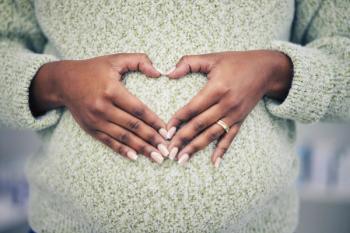
- Drug Topics March 2022
- Volume 166
- Issue 03
Managing Chronic Kidney Disease in Patients With Diabetes
How can pharmacists help slow the progression of diabetic kidney disease?
As of 2019, more than 37 million Americans—11.3% of the population—had diabetes, according to the American Diabetes Association.1 Diabetes is a major risk fac- tor for chronic kidney disease (CKD), a condition with which approximately 1 in 3 adults with diabetes—type 1 (T1D) or type 2 (T2D)—is living.2,3 Many of these patients may progress to end-stage kidney disease (ESKD), requiring dialysis or transplantation.4
Although the progression of CKD can be slowed or even reversed by appropriate drug therapy and lifestyle changes, many patients do not get the treatment they need. In fact, many patients may not receive a diagnosis, as early-stage CKD is asymptomatic.
Wendy L. St. Peter, PharmD, professor at the University of Minnesota College of Pharmacy and an investi- gator with the United States RenalData System, is leading a national initiative to advance kidney health through optimal medication management, including incorporat-ing pharmacists into team-based care. “Primary care physicians, where a lot of these patients are being seen for their diabetes or high blood pressure, may not have the time or expertise to manage all these new medications for the purpose of reducing progression of kidney disease,” St. Peter said. Coupled with a shortage
of nephrologists, this creates an ideal opportunity for clinical pharmacists with advanced training to work with an interdisciplinary team and manage medication use in diabetic kidney disease (DKD).
As frontline health care workers who know patients, their diagnoses, and their prescriptions well, community pharmacists can be instrumental in the identification and appropriate treatment of DKD, said St. Peter. Urine screening can be valuable in identifying albuminuria (Table 1),5 which
is often one of the first signs of CKD, whereas regular blood work is needed to detect declines in estimated glomerular filtration rate (eGFR).
Double-Duty Drugs
Two recent clinical trials—CREDENCE (NCT02065791) and Dapa-CKD (NCT03036150)—have represented important developments in demon- strating the beneficial renal and cardiovascular effects of sodium-glucose cotransporter 2 (SGLT2) inhibitors, which were initially approved for T2D. “This has really changed our practice and treatment options for patients [who] have CKD and diabetes with albuminuria,” said Abby Hines, PharmD, an ambulatory care clinical pharmacist in the Division of Nephrology, Bone and Mineral Metabolism at UK HealthCare in Lexington, Kentucky.
The Kidney Disease: Improving Global Outcomes (KDIGO) 2020 Clinical Practice Guideline6 for the management of CKD in diabetes recommends SGLT2 inhibitors with metformin as first-line antidiabetic therapy for patients with T2D and CKD. Metformin can be initiated as long as the patient’s eGFR is 30 mL/min/1.73 m2 or greater but must be discontinued if the eGFR drops below that (Table 2).5 For patients with T1D, there is no strong evidence for the use of SGLT2 inhibi- tors, which carry a risk of euglycemic diabetic ketoacidosis, Hines said.
KDIGO guidelines also recommend patients with diabetes, albuminuria, and hypertension be treated with the highest-tolerated dose of angiotensin-converting enzyme inhibitor or angiotensin II receptor blocker to reduce decline in kidney function. For patients with diabetes and CKD who are not meeting personalized glycated hemoglobin A1C goals, despite being prescribed maximal doses of metformin and SGLT2 inhibitors, KDIGO guidelines recommend adding a glucagon-like peptide 1 receptor agonist (GLP-1 RA). There is ongoing research on the benefits of GLP-1 RAs in CKD that appears promising, Hines said.
An even more recent development that is not included in the most recent KDIGO guidelines is the July 2021 FDA approval of finerenone (Kerendia),7 a first-in- class nonsteroidal selective mineralocorticoid antagonist shown to reduce risk of serious kidney and heart complications in adults with CKD and T2D. Hines expects to see finerenone used more frequently in the coming months and years.
Lightening the Pill Burden
Because patients with DKD often have other comorbidities, they usually have very complex drug regimens that may feel overwhelming. “We can give all these medications to patients, but unless they take them, they don’t work,” said Candis M. Morello, PharmD, APh, CDCES, FCSHP, FASHP, a clinical pharmacist specialist and director of the Diabetes Intense Medical Management Clinic at the Veterans Affairs San Diego Healthcare System in California. Pharmacists can play a crucial role in reducing the number of prescribed drugs, tailoring regimens, and accounting for lifestyle, cultural beliefs, and medication preferences, from how frequently medications should be taken to decisions on oral vs injecta- ble drugs and the size of ingestible tablets or capsules. Patients often appreciate taking a combination SGLT2 inhibitor with metformin, which reduces the daily pill count, Morello noted.
St. Peter stressed the importance of patient education. “Pharmacists can work with patients to [explain] why they are taking these medications, why they’re important, [and] why these medications can avert future disasters, [such as] ESKD,” she said. Awareness of racial disparities in kidney risk is also imperative, St. Peter noted. African American individ- uals are more than 3 times as likely as White individuals to develop ESKD. Asian, Hispanic, and American Indian individ- uals are also at increased risk.3
Counseling Points
Patients taking SGLT2 inhibitors need to be counseled about the adverse effects associated with these agents, including hypovolemia (when taken with diuretics), urinary tract infections, and genital yeast infections. Hines urges patients taking diuretics with SGLT2 inhibitors to increase their fluid intake and monitor their urine color to make sure they are not becoming dehydrated. In some cases, she advises decreasing the dose of the diuretic. Even though the black box warning for amputations has been withdrawn from SGLT2 inhibitors, Morello still advises patients taking these agents to check their feet daily for changes.
Although hypoglycemia is not usually a risk with SGLT2 inhibitor therapy, it is possible in patients taking other anti- diabetics, particularly insulin. Hines often works with providers to decrease insulin doses by 10% to 20% in patients starting SGLT2 therapy. Pharmacists must be mindful of which drugs are excreted by the kidneys so doses can be adjusted as necessary as kidney function declines, St. Peter noted. This includes metformin and antibiotics.
Patients should be reminded to monitor their blood glu- cose and blood pressure and be made aware of the die- tary and lifestyle changes that play a part in diabetes con- trol.“We don’t want to lose sight of [the] big things, [such as how] controlling diabetes plays such a positive role in delaying the progression of kidney disease,” Morello said.
References
- Statistics about diabetes. American Diabetes Association. Updated February 4, 2022. Accessed February 10, 2022.
https://www.diabetes.org/about-us/statistics/about-diabetes - Diabetes and chronic kidney disease. CDC. Reviewed May 7, 2021. Accessed February 10, 2022.
https://www.cdc.gov/diabetes/managing/diabetes-kidney-disease.html - Chronic kidney disease in the United States, 2021. CDC. Reviewed March 4, 2021. Accessed February 10, 2022.
https://www.cdc.gov/kidneydisease/publications-resources/ckd-national-facts.html - CKD related health problems. CDC. Reviewed March 4, 2021. Accessed February 10, 2022.
https://www.cdc.gov/kidneydisease/publications-resources/annual-report/ckd-related-health-problems.html - How to classify CKD. National Kidney Foundation. Accessed February 10, 2022.
https://www.kidney.org/professionals/explore-your-knowledge/how-to-classify-ckd - de Boer IH, Caramori ML, Chan JCN, et al. Executive summary of the 2020 KDIGO Diabetes Management in CKD Guideline: evidence-based advances in monitoring and treatment. Kidney Int. 2020;98(4):839-848. doi:10.1016/j.kint.2020.06.024
- FDA approves drug to reduce risk of serious kidney and heart complications in adults with chronic kidney disease associated with type 2 diabetes. News release. FDA; Published July 9, 2021. Accessed February 10, 2022.
https://www.fda.gov/drugs/news-events-human-drugs/fda-approves-drug-reduce-risk-serious-kidney-and-heart-complications-adults-chronic-kidney-disease
Articles in this issue
almost 4 years ago
Counseling Pearls: Allergic Asthma Treatmentalmost 4 years ago
Is Automated Prescription Pickup the Future of Pharmacy?almost 4 years ago
Cost, Culture Affect Access to Autoimmune Disease Carealmost 4 years ago
Black Market Boom: Protecting Pharmacy Data from Cybercrimealmost 4 years ago
OTC Review: Treatment Options for Osteoarthritisalmost 4 years ago
mRNA Vaccine Technology Updatealmost 4 years ago
mRNA Technology Leads to Advances in HIV Vaccine Candidatealmost 4 years ago
Prescribing Transparency as the Solution to Pharmacy Owner Woesalmost 4 years ago
Molnupiravir: Oral Antiviral for the Treatment of COVID-19almost 4 years ago
“Smart” Therapeutics Create Ethical ConundrumsNewsletter
Pharmacy practice is always changing. Stay ahead of the curve with the Drug Topics newsletter and get the latest drug information, industry trends, and patient care tips.















































































































